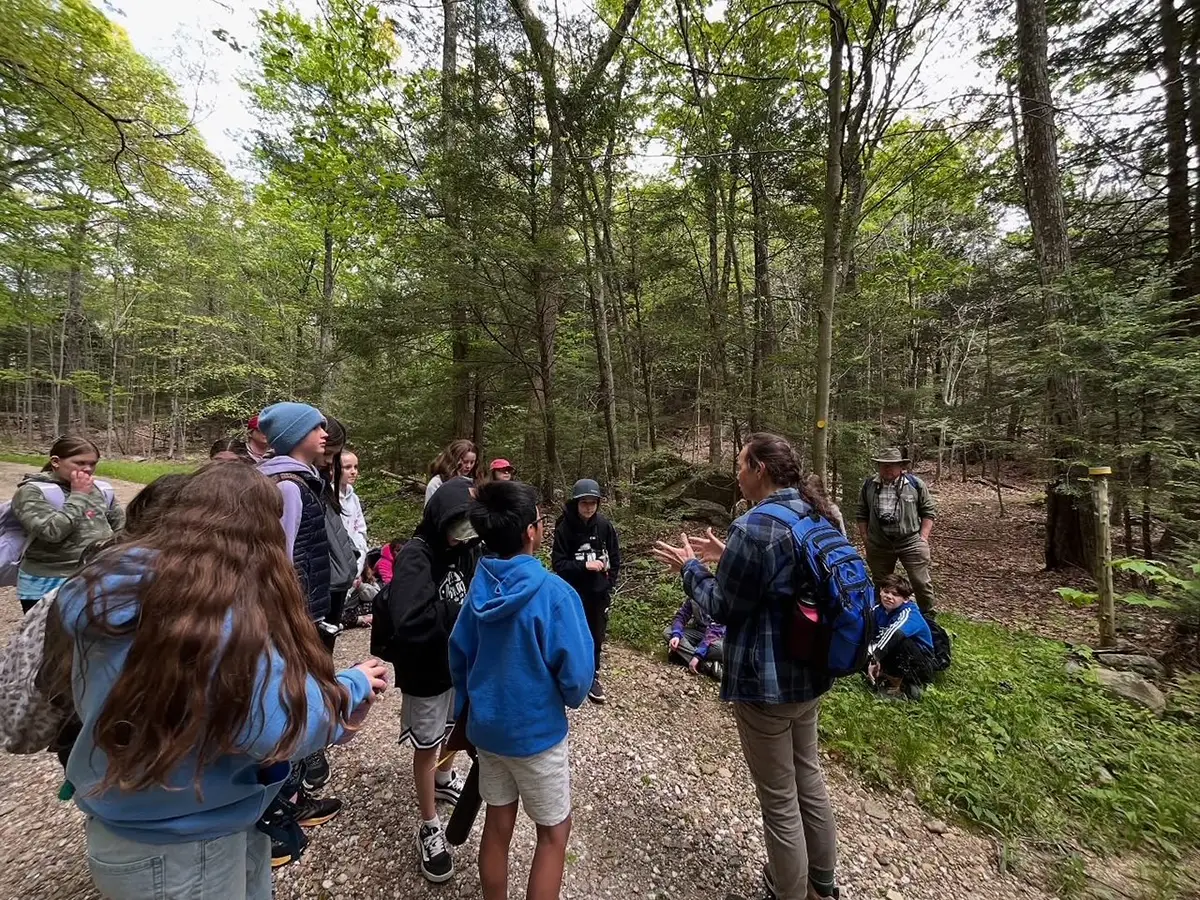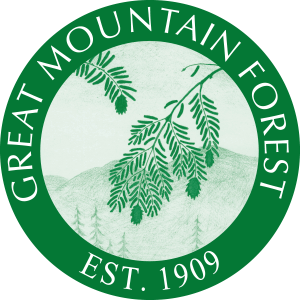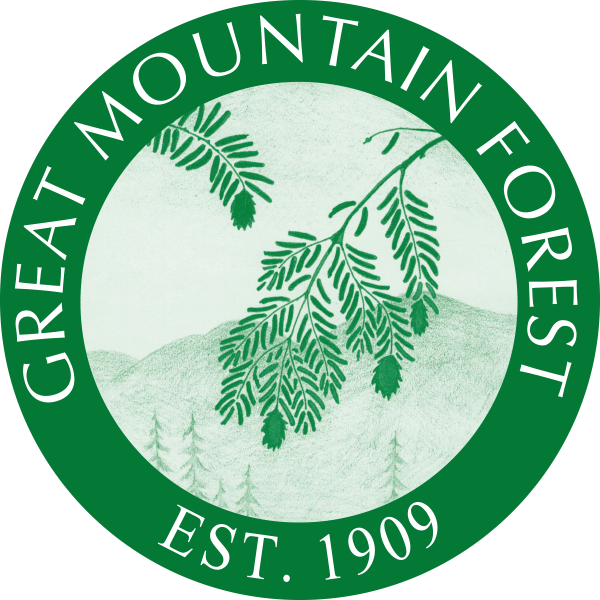Whispers of the Forest- Exploring the Ecology of Great Mountain Forest

Most Prevalent Themes:
- Tree Identification & Adaptations MS-LS1-4
- Forest Structure & Layers MS-LS2-2
- Biotic–Abiotic Interactions MS-LS2-1
- Energy Flow & Matter Cycling MS-LS2-3
- Succession, Disturbance & Biodiversity MS-LS2-4
Audience:
Middle School (adaptable for Elementary and High School)
Duration:
2 ½ hours
Extensions:
Beneath the Surface: The Hidden Life of Forest Waters- 90 minutes
Description
Step into the woods and uncover the hidden stories of Connecticut’s forests! In this outdoor adventure, students become forest ecologists, exploring how trees adapt, survive, and shape the ecosystems around them. Through field investigations, scavenger hunts, and close-up observations, they will learn to identify trees by their leaves, bark, and seeds; uncover the secrets of forest layers; study succession; and discover how abiotic and biotic components all play a role in forest health. Students will practice inquiry by making claims, collecting and analyzing real-world evidence, and constructing reasoning to explain ecological patterns and interactions. From towering trunks to tiny fungi, every part of the forest has something to contribute—come find out how it all connects!
Learning Intentions:
By the end of the session, students will be able to:
- Identify and classify trees using leaves, bark samples and field guides; describe their role in different forest layers.
- Investigate how environmental factors (weather, soil, etc) influence tree growth and forest composition and forest structure.
- Observe tree adaptations for survival, reproduction, and ecological roles.
- Assess forest health and identify evidence of ecological disturbances and stages of succession.
- Explore the interrelationships between trees, wildlife, and forest layers of a forest ecosystem.
- Distinguish between biotic and abiotic components in a forest ecosystem and explain how abiotic factors influence living organisms and overall forest dynamics.
- Examine how trees and plants contribute to energy flow and matter cycling including nutrient recycling and food web relationships (producers, consumers and decomposers.

